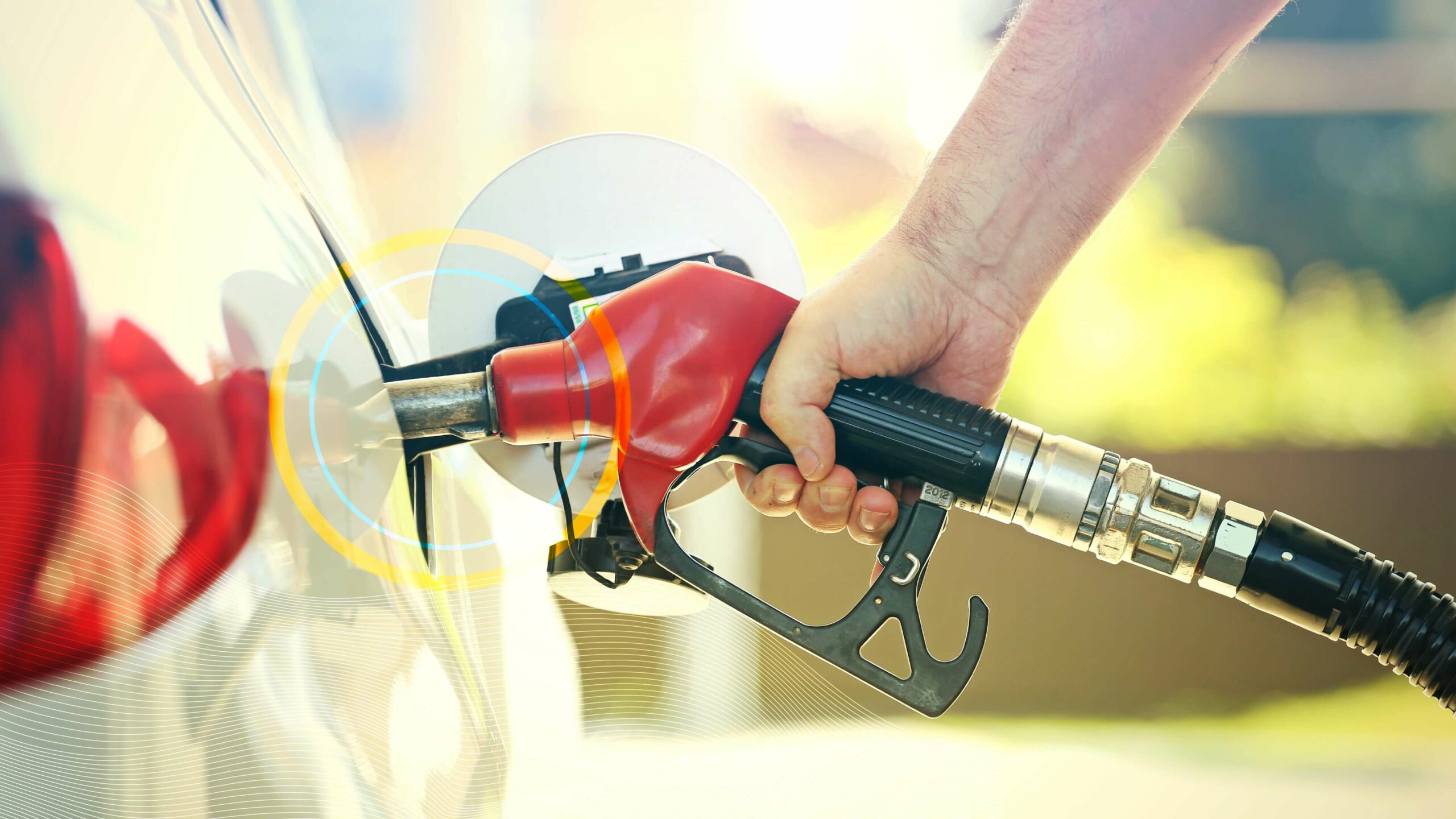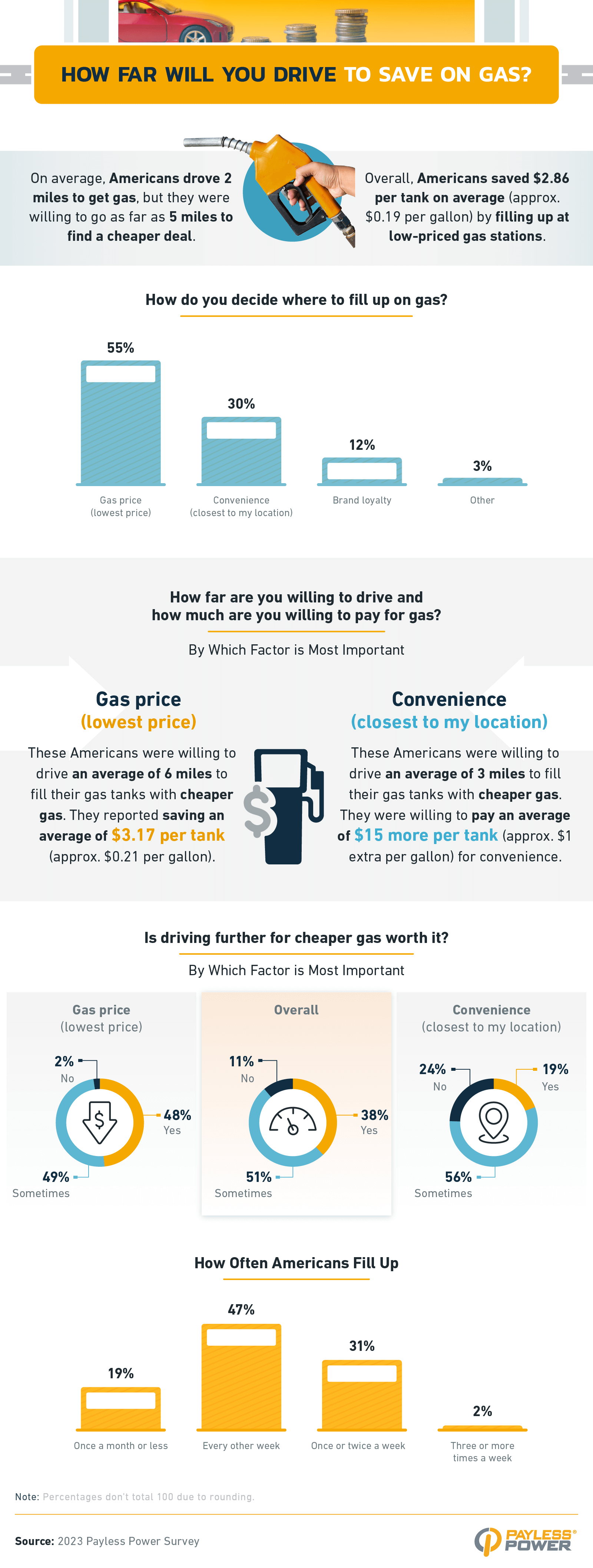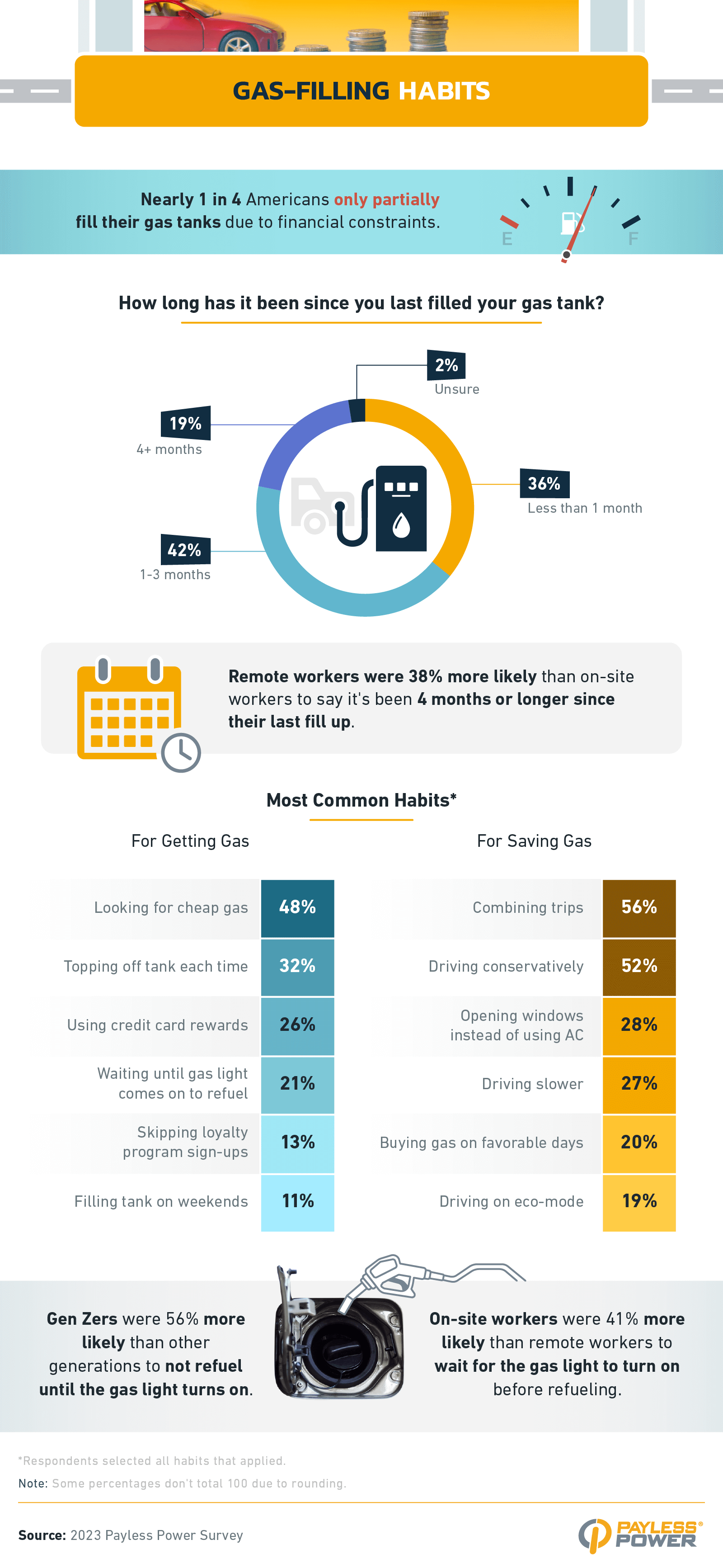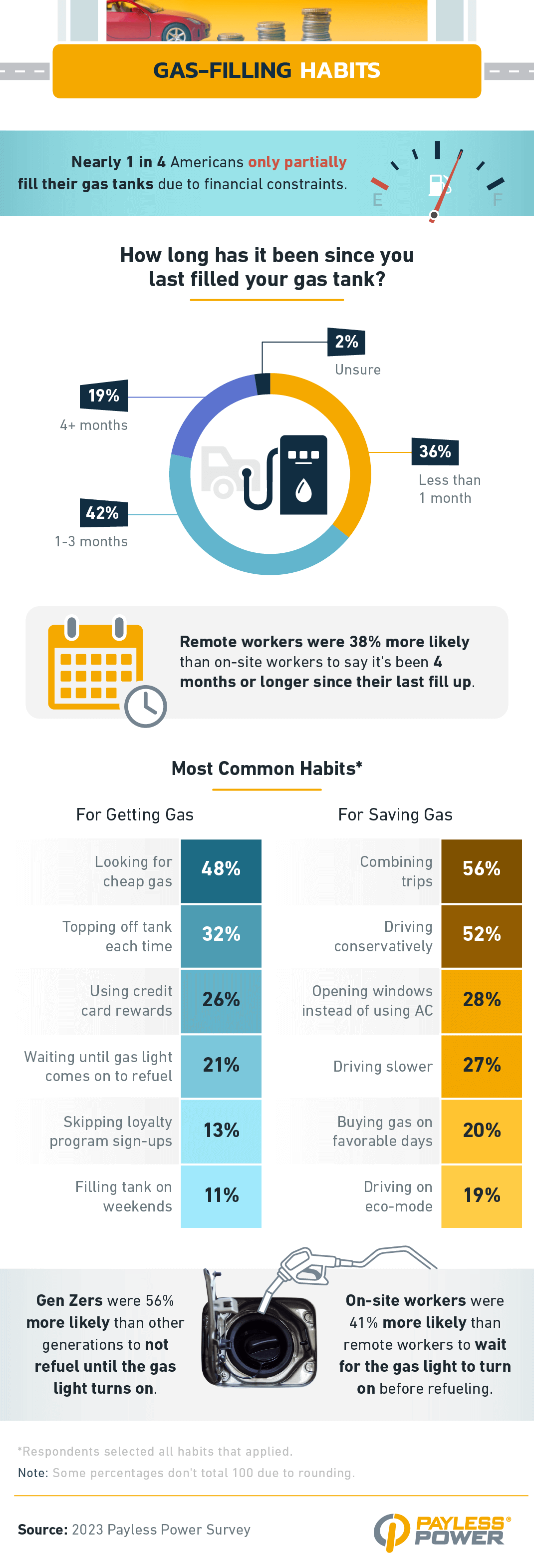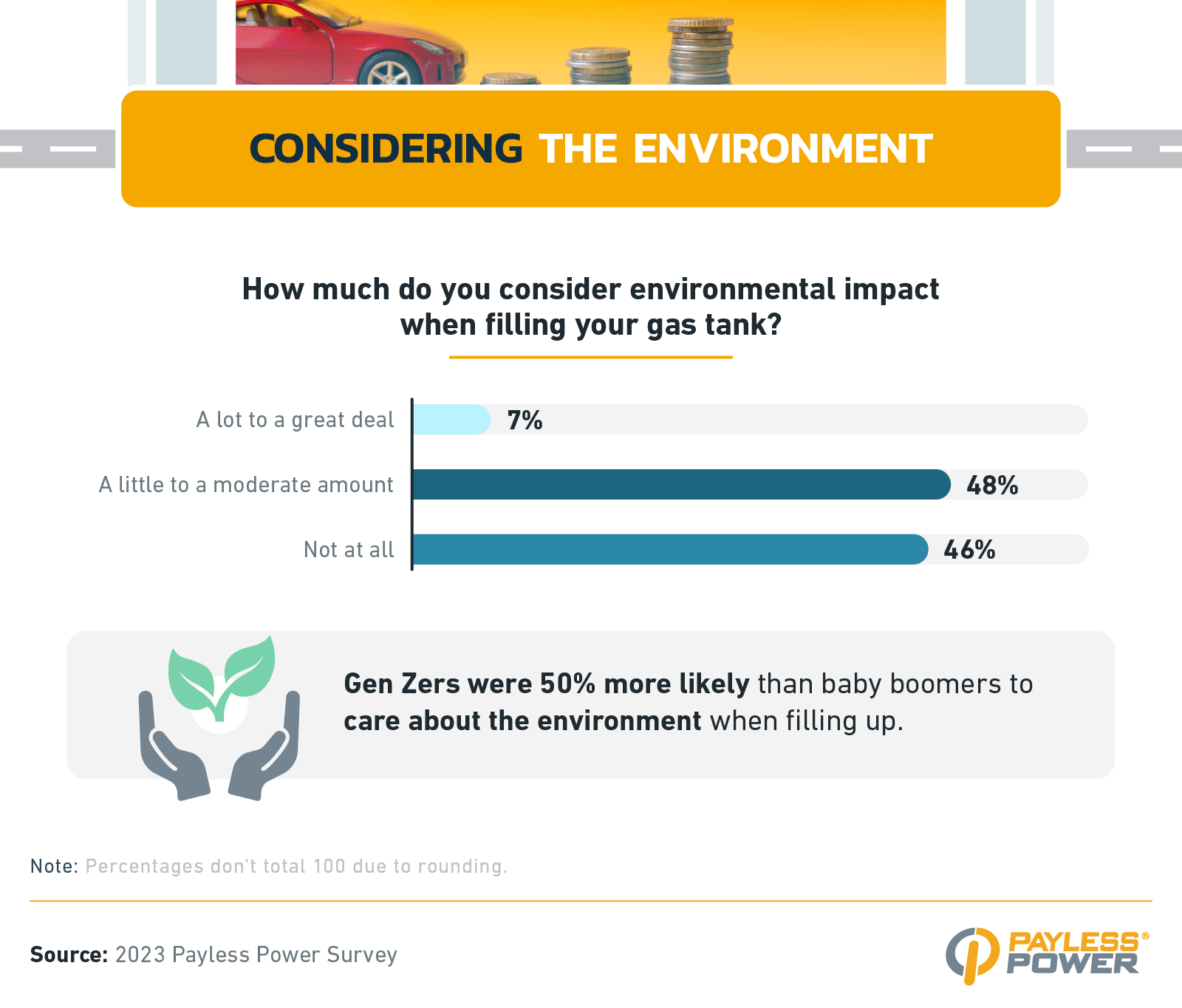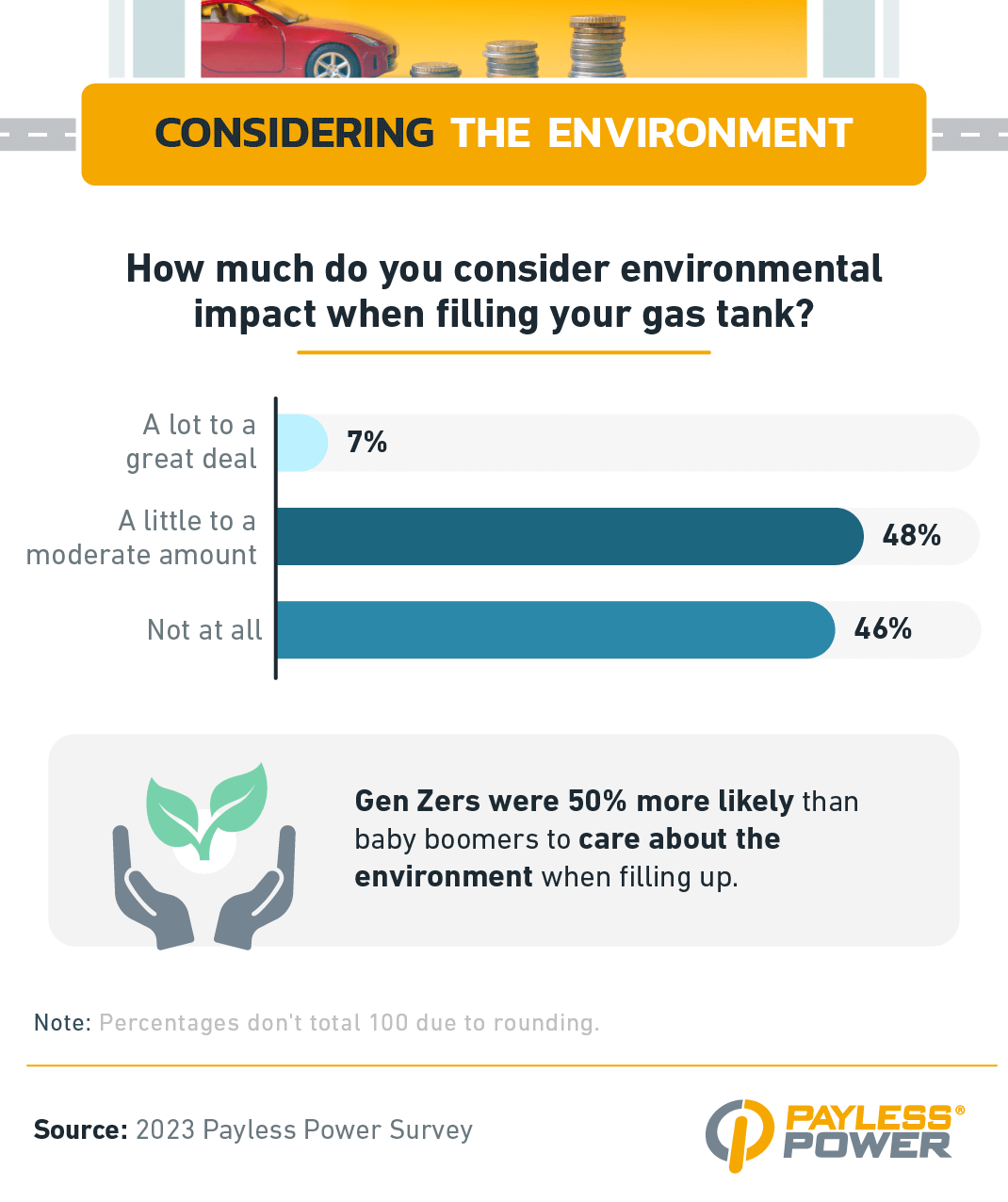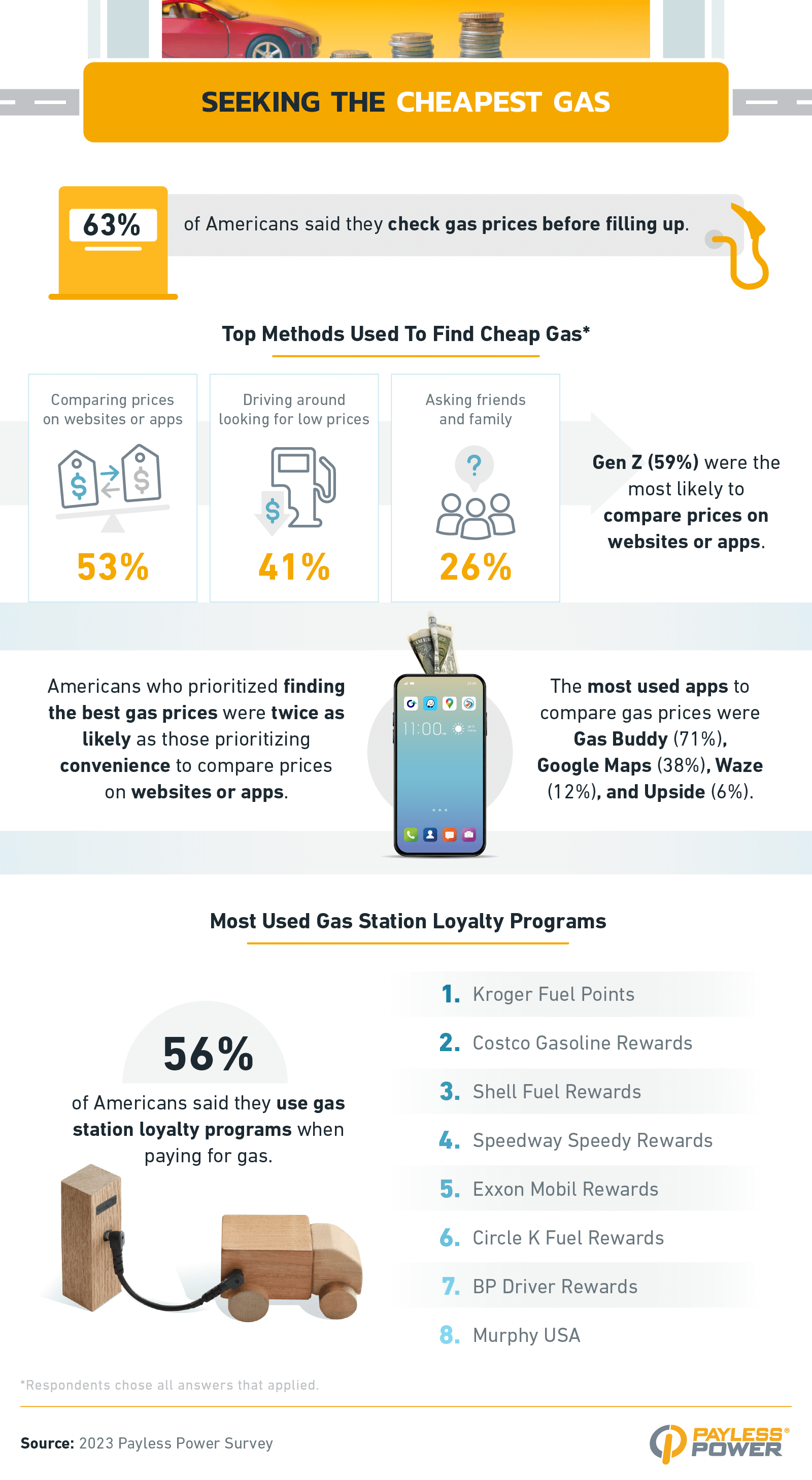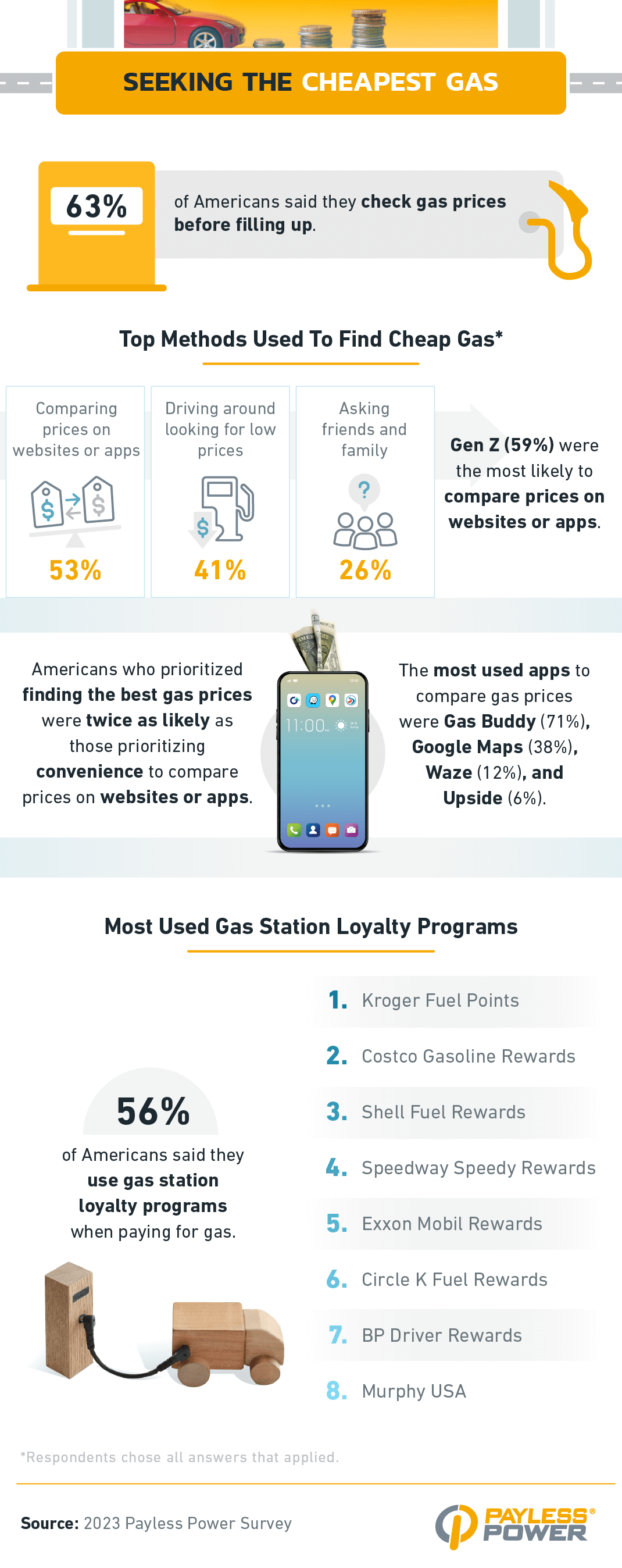Key Takeaways
- Nearly 1 in 4 Americans only partially fill their gas tanks due to financial constraints.
- More than 1 in 5 Americans drive until their gas light comes on before refueling their car.
- 46% of Americans don’t consider environmental impact when filling gas tanks.
Gas Filling Habits, Budgets, and the Environment
The top issues impacting Americans’ habits at the gas pump these days are environmental sustainability and cost. To find out how, we surveyed over 1,000 drivers in the U.S. about their feelings on these topics. What (if anything) are they doing to conserve gas, save money, and protect the environment? We also analyzed the fuel efficiency and carbon emissions of popular 2023 car models to give you an idea of how sustainable they are.
Driving the Extra Mile
With gas prices as high as they’ve been in recent years, you’re likely no stranger to driving a little further than you’d like to save a few dollars. But how many people are more driven by convenience than cost?
Americans drive an average of two miles to gas up, but they’d go up to five miles for a better deal. A few respondents stood out from the crowd, though: More than 1 in 8 said they’d drive an extra 10 miles to save on gas.
While finding the cheapest gas price was the No. 1 factor determining where our respondents fill up (according to 55%), the next-most common factors were convenience (30%) and brand loyalty (12%). Generationally, the youngest drivers (Gen Zers) were the most likely to prioritize price, while millennials were the most likely to prioritize proximity.
More Ways To Save
Fortunately, there are other ways to save at the pump than driving further than you’d like. Let’s see what other methods Americans are using.
Aside from going out of their way to find cheap gas, some Americans (nearly 1 in 4) said they only partially fill their tanks. Almost as many (more than 1 in 5) reported waiting until their gas light comes on before refueling. Many are also fostering gas-saving habits. The top three reported by our respondents are:
- Combining trips (56%)
- Driving conservatively (52%)
- Using windows instead AC (28%)
Opening windows instead of using AC to stay cool might be more effective in some places than others. This might explain the drop in how many people use this cost-saving method compared to the other top three. But there may also be a generational divide. Here’s how many respondents of each generation said they choose windows over AC:
- 34% of millennials
- 29% of Gen Z
- 26% of Gen X
- 22% of baby boomers
Other drivers might instead opt for a rewards program designed to help them save money on gas. But some age groups were more likely to take advantage of these programs than others. Of our respondents, loyalty program sign-ups have been skipped by:
- 23% of Gen Z
- 11% of millennials
- 10% of Gen X
- 9% of baby boomers
Purpose at the Pump
Environmental issues are a common concern these days, especially when it comes to fossil fuel consumption and emissions. But do these things impact Americans’ car-fueling habits?
When we asked respondents how much they consider the environment when filling up at the pump, only 7% said it does “a lot” to “a great deal.” The majority (94%) said they either don’t at all or only “a little” or “moderately.” Younger generations seemed to care the most; Gen Z was 50% more likely than baby boomers to think about their environmental impact while refueling.
Sustainable Mobility
Whether you’re conserving gas to save money or reduce carbon emissions, it’s hard to do if you drive a gas guzzler. See how hundreds of 2023 car models stack up according to their average fuel efficiency in miles per gallon (mpg). The following table provides an estimated approximation of the carbon emissions per mile for each car model.
The amount of carbon dioxide (CO2) emitted by a car depends on many factors. Some of them are:
- Fuel efficiency (mpg)
- Fuel type
- Driving conditions
On average, most passenger cars emit around 404 grams of CO2 per mile. But cars that have better fuel efficiency and use sustainable fuels (electric cars and hybrids, for example) tend to emit the least amount of CO2. Likewise, cars with lower fuel efficiency and which rely on fossil fuels such as gasoline and diesel typically have the highest emissions.
Fuelling Your Wallet
Now that we’ve seen which vehicles are the most fuel-efficient (thus, offering the most gas savings), let’s look at how Americans find cheap gas. Are some brands more affordable than others?
As we’ve pointed out (and as you’ve surely noticed), gas prices have been high. So, it’s no surprise that 63% of the Americans we surveyed said they check prices before they fill up. The most common ways they’ve done this are:
- Comparing prices on websites or apps (53%)
- Driving around in search of low prices (41%)
- Asking friends and family (26%)
Gen Zers were the most likely to check prices on the web or in apps (59%). Along with millennials, they’ve mainly used Google Maps to compare prices. But GasBuddy was the most popular choice among older generations: Gen X (84%) and baby boomers (81%).
Gas Savings Within Reach
Few people seem to consider the environment when buying gas, but barriers to switching to an electric vehicle might have Americans fueling up out of necessity, regardless of their feelings about sustainability. On the bright side, whether it’s because of the cost of gas or due to environmental concerns, many are taking steps to reduce their gas usage. While buying a more fuel-efficient, lower-emission vehicle can amount to a lot of fuel savings in the long run, driving less and using the AC as little as possible can help keep you within your budget.
Methodology
For this campaign, we surveyed 1,027 drivers of gas-fueled cars. Among them, 51% were women, and 49% were men. The generation breakdown is as follows: 24% were Gen Z, 25% were millennials, 25% were Gen X, and 26% were baby boomers.
We also collected data on different gas-fueled cars from 2023 from the U.S. Department of Energy to estimate their carbon emissions per mile. The carbon emission per mile was estimated using each car’s fuel efficiency (mpg) and estimating that a full tank of gas lasts 300 miles on average. To get the carbon emission estimates per mile, we considered the average estimate of the carbon emissions per gallon of gasoline (8,887 grams or 8.8 kg of CO2), according to the EPA.
About Payless Power
Payless Power offers affordable electricity for all with plans to fit any budget. Our goal is to save Texans money on their energy bills.
Fair Use Statement
If you found these fuel-saving tips helpful, we encourage you to share them! We just ask that you include a link to this page when you do.

